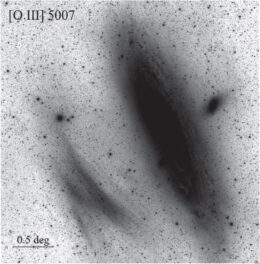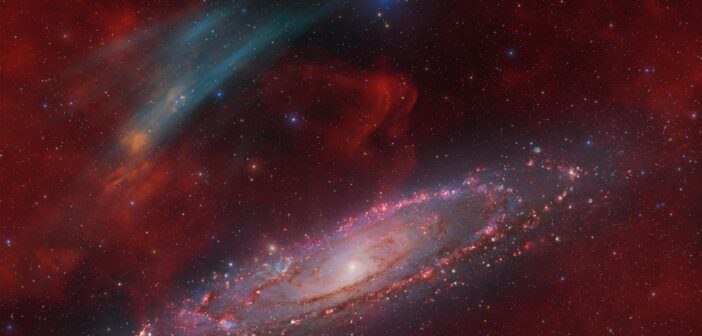Editor’s Note: In these last two weeks of 2023, we’ll be looking at a few selections that we haven’t yet discussed on AAS Nova from among the most-downloaded articles published in AAS journals this year. The usual posting schedule will resume in January.
Discovery of Extensive [O III] Emission Near M31
Published January 2023
Main takeaway:

The discovery image showing the nebulous feature to the left of Andromeda. [Adapted from Drechsler et al. 2023]
Why it’s interesting:
The Andromeda Galaxy is one of the nearest galaxies to the Milky Way, and its proximity and gorgeous spiral structure make it a common target for astrophotographers. Despite the attention paid to this galaxy, the new feature has escaped our attention until now. While the wispy nebula is visible at 500.7 nanometers, it doesn’t show up when an H-alpha filter is used. The object’s faint emission, present in only a narrow wavelength range, likely explains why it’s escaped notice until now.
On its nebulous nature:
The nature of this feature, as well as its origins and whether it’s associated with the Milky Way or Andromeda, remains unknown. Possibilities within the Milky Way include a supernova remnant or a planetary nebula — the ghostly, glowing atmosphere shed by a low- to intermediate-mass star that has ceased to fuse hydrogen in its core — but both of these options lack supporting data, such as the presence of radio or ultraviolet emission from a supernova remnant. Another possibility is that the feature formed through the gravitational interaction between Andromeda and the Milky Way or another galaxy that has been torn apart.
Citation
Marcel Drechsler et al 2023 Res. Notes AAS 7 1. doi:10.3847/2515-5172/acaf7e
